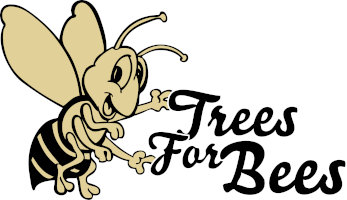
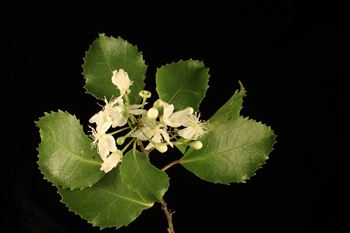
Figure 1. Leaves on a branch of lacebark, Hoheria populnea, with open flowers, new flower buds, and old spent flowers.
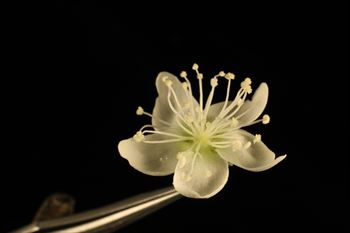
Figure 2. Lacebark (Hoheria populnea) flower with 25 to 30 stamens arranged in whorls around the centre of the flower.
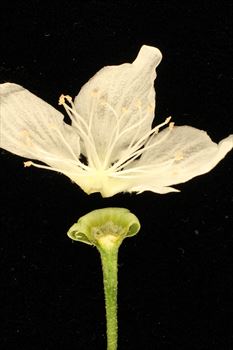
Figure 3. Lacebark (H. populnea) flower dissected to show the nectary at the base of the flower. To expose the nectary area, the petals are pulled off the flower in one unit because they are fused at the base of the flower. In the mature flower, the nectaries are yellow tinged and in a ring around the center of the flower.
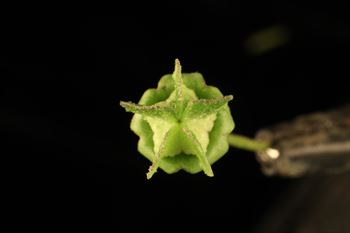
Figure 4a. Immature fruit of lacebark with five wings on the fruit. Top down view shows the five wings of the fruit.
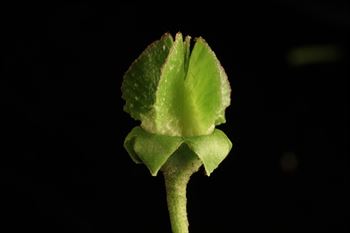
Figure 4b. Immature fruit of lacebark with five wings on the fruit. Side view.
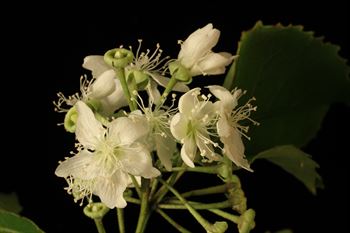
Figure 5. Lacebark (H. populnea) has densely clustered large showy flowers on each flowering branch. H. sexstylosa is similar. All photos © David Glenny, Trees for Bees.
Star Performer Status
Bees need a good nectar and pollen supply in autumn to produce robust bees that will survive the winter months, but there are few flowering species available at this time. Several lacebark (Hoheria spp.) species are outstanding star performers because they flower profusely in autumn and are some of the few large flowered native species readily available in the nursery trade. Of the seven native species of Hoheria (lacebarks, houhere, ribbonwood), three are star performers because they flower in autumn during this stark shortage of other flowers. A fourth species is worthy of consideration as it flowers through summer into autumn. The autumn-flowering species are Hoheria populnea, H. sexstylosa and H. glabrata; these are exceptional trees/shrubs with a profusion of showy white scented flowers that contribute abundant pollen and nectar. The fourth species is Hoheria lyallii, which is similar to H. glabrata and flowers from November to March.
Introduction
Although the natural distribution of H. populnea is in the upper North Island only, it has spread and naturalised throughout New Zealand from cultivated garden escapes, so some consider it a ‘native weed’. Hoheria sexstylosa naturally occurs from the middle of the North Island down to the Wellington coast and the Wairarapa. In the South Island there are localised endemic populations in northwest Nelson, Marlborough and Banks Peninsula. However, since it hybridises with H. angustifolia in the South Island, there is concern in some areas such as Canterbury to protect natural populations of H. angustifolia from genetic swamping.
Hoheria glabrata occurs on the wetter western side of the Southern Alps in the South Island and Mount Taranaki in the North Island, but extends eastward into Central Otago, where it hybridises with H. lyallii. Hoheria lyalli’s natural range is the drier eastern side of the Southern Alps. Nevertheless, with careful siting these species are of tremendous value to bees in autumn.
Important species flowering times and summary of distributions are as follows:
Hoheria populnea (houhere, lacebark) flowers from January to March and is distributed from Norhtland to Waikato and Coromandel.
Hoheria sexstylosa (houhere, long-leaved lacebark flowers from February to May and is distibuted from Waikato/Coromandel to Wellington/Wairarapa and Nelson, Marlborough and Banks Peninsula.
Hoheria glabrata (mountain lacebark, ribbonwood) flowers from February to March and is distributed in the West South Island and Mount Taranaki.
Hoheria lyallii (mountain lacebark, ribbonwood) flowers from November to March and is distributed in the dryer east side Southern Alps.
Here is a hint on how to distinguish H. sexstylosa from H. populnea. Look at the mature ovary, or better still, look at the maturing fruit. You will see wings on the fruit. H. populnea has only five wings (Figures 4a and 4b), but H. sexstylosa has six, seven or more wings on the ovary/fruit. (Dawson & Lucas, 2011). H. sexstylosa has longer, thinner adult leaves than H. populnea, hence the common name long-leaved lacebark for H. sexstylosa. Both species have similar densely clustered groups of large showy flowers (Figure 5).
Pollen
Pollen
Hoheria flowers are a perfect example of ‘open dish’ flowers, with exposed nectar and pollen giving ready access for bees. Each star-shaped flower has many stamens (from 25 to 30 or more) in a whorl around the centre of the flower (Figure 2). The numerous stamens, large-sized flowers, and high density of flowers per plant add up to provide abundant pollen on each tree or shrub. Our results for protein content in pollen ranged from 18% to 22%.
Nectar
Nectar
Lacebark species produce plentiful nectar for bees in autumn. Figure 3 shows a flower dissected to show the nectary area. The petals have been pulled off the flower in one unit (they are fused at the base of the petals) and the stamens are attached to the petals, not the ovary or receptacle, so they come off with the petals. At the base of the flower is a central yellow-tinged ring of the nectaries where nectar is produced. Walsh (1967) has reported that H. populnea yields abundant nectar in May. In Auckland, the bees even obtain a surplus of nectar from this source in May.
Planting Advice
Planting advice
Hoheria species are ideally suited to a wide range of bee feed designs. They can be included in riparian plantings, mixed native species shelterbelts, and group plantings of native species. As small trees, they should be spaced 5–6m apart, but can be interplanted with smaller shrub species. Care should be taken to use species that are endemic to your region, as there is increasing hybridisation of Hoheria species and this is becoming an issue in some areas. Clustering many trees or shrubs together in hedges or rows close to the apiary will make autumn foraging more efficient for the bees.
Hoheria populnea grows to 11m and has a habitat that is the successional forest from coastal to montane habitats. It is tolerant of a wide range of sites and conditions. Fast-growing and suitable for shelterbelts, but can be shortlived due to Hoheria die-back.
Hoheria sexstylosa grows to 8m and has a habitat that is coastal lowland to montane riparian forest. It prefers sheltered and damp sites until established.
Hoheria glabrata grows to 10m and has habitats that are disturbed habitats to supalpine regions, including forest margins and stream sides. It prefers young, deep, moist, well-drained and often stony soils. Does best in cooler climates. Strongly deciduous with attractive autumn colours.
Hoheria lyallii grows from 6 to 8m and it's habitats areupper forest margins and sub-alpine habitats, river and stream terraces. It prefers a damp soil in a sunny site, and does best in cooler climates. Dislikes humidity and will not flower in warmer climates.
Hoheria angustifolia is not included here as it flowers in the summer time and our focus in planting for bees is on the spring and fall seasons.
Only Hoheria populnea and H. lyalli were included in Walsh (1967) 1978 list of bee pollen and nectar sources.
What did Walsh (1967) 1978 say?
Houhere (Hoheria populnea)
A small forest tree, up to 12m high, also known as lacebark, yielding abundance of nectar mainly in May. The flowers are whiteand star shaped and bloom in such profusion that the leaves are frequently concealed.
Infavourable seasons, and May is generally a good month for nectar gathering in Auckland, the bees obtain a surplusfrom this source.
Flowering period extends from March until May.
The honey is medium amber in colour with a strong but not unpleasant flavour. It is light bodied and if the cappings are bruised runs very freely.
Mountain Ribbonwood (Hoheria lyallii).
Found mainly in upland districts of the South Island, yields a dark nectar in the autumn. Grows to 8 m.
Quoted from Page 6 in the book Nectar and Pollen Sources of New Zealand by R.S. Walsh first published in 1967 and second edition in 1978 edited by Trevor Walton with assistance from David Williams, Rotorua.
Exotic
False
Native
True
References
References
Dawson, J, & Lucas R. (2011). New Zealand’s native trees. Nelson: Potton & Burton.
New Zealand Plant Conservation Network. Hoheria sexstylosa. Retrieved from http://www.nzpcn. org.nz/flora_details.aspx?ID=825
Salmon, J. T. (1986). The Reed field guide to New Zealand native trees. Auckland: Reed Books.
Walsh, R. S. (1967). Nectar and pollen sources of New Zealand. Wellington: National Beekeepers Association of New Zealand. (Revised edition 1978, Walton, T., Williams, D. Eds.)